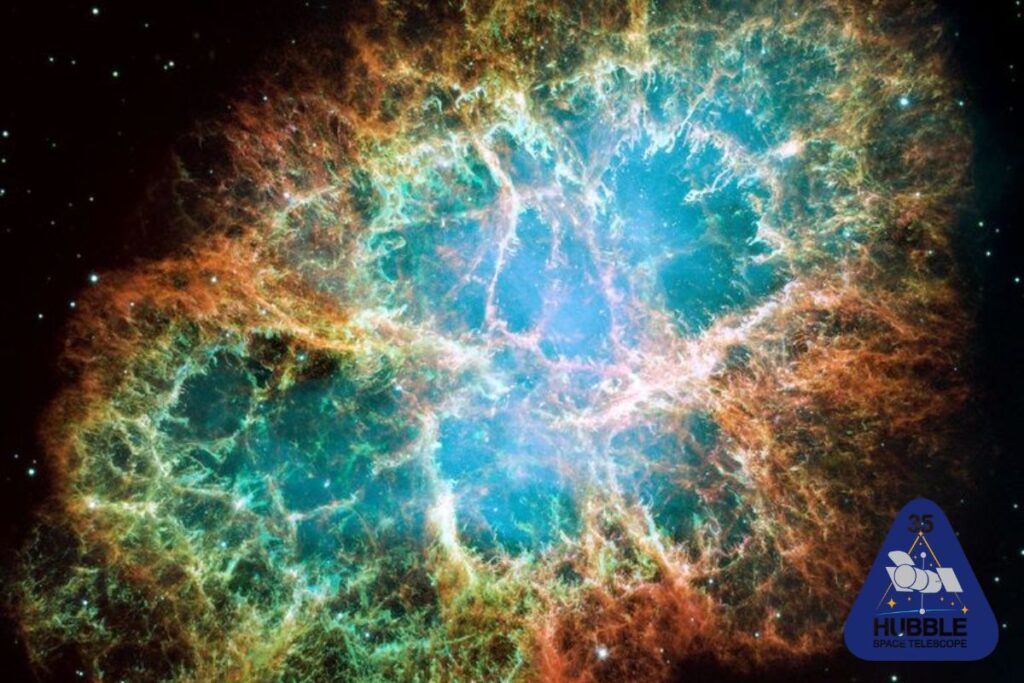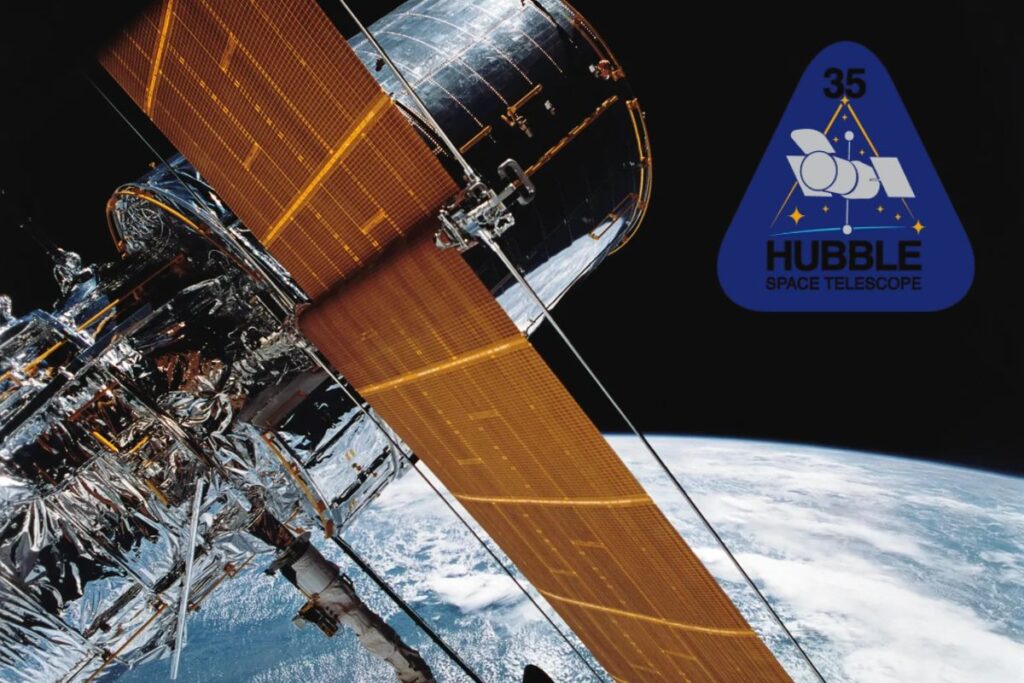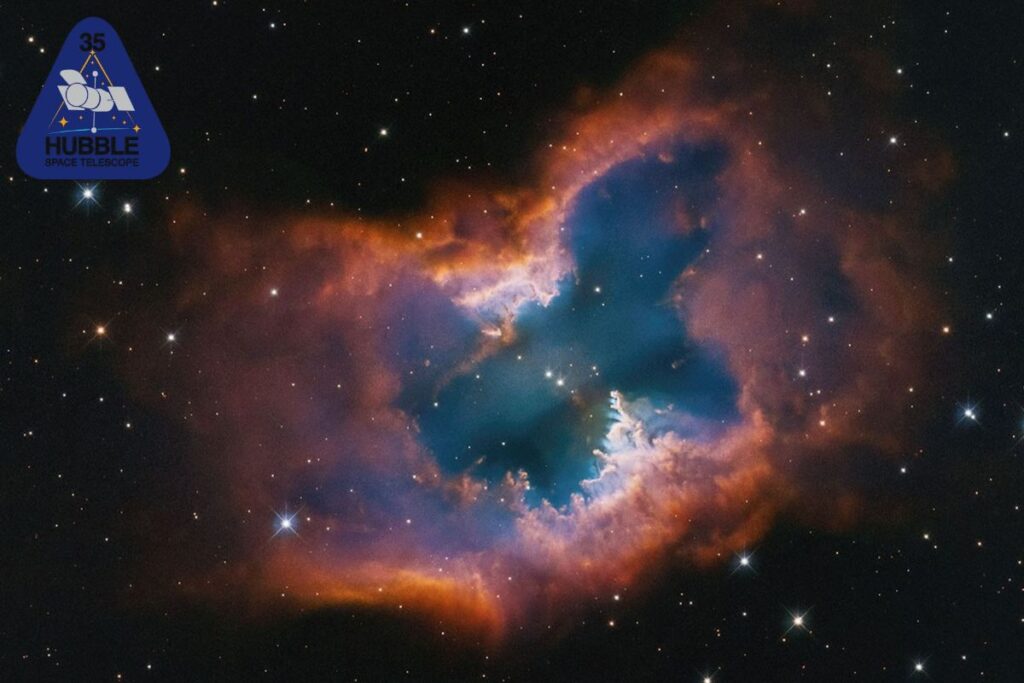On April 24, 2025, the Hubble Space Telescope marks 35 years in orbit, making it one of the most revolutionary scientific instruments in astronomy.
Since its launch in 1990, he has provided spectacular images and discoveries that have transformed our understanding of the universe.
What is Hubble?
He is a space telescope developed by NASA in partnership with the ESA (European Space Agency).
Its name honors Edwin Hubble (1889–1953), the American astronomer who demonstrated that the universe is expanding, formulating the well-known Hubble’s Law.
Currently, the telescope orbits the Earth at an altitude of approximately 525 km, completing an orbit every 95 minutes. With a length of 13.2 meters and a diameter of 4.2 meters, it weighs about 11,110 kg.

Remarkable achievements in recent years
To celebrate its 35 years, NASA highlighted some of the most impressive images captured by Hubble over recent years of its mission. Notable recent accomplishments include:
- Image of the Planetary Nebula NGC 2899: in 2025, he released a new image of the Planetary Nebula NGC 2899, known for the “Pillars of Creation,” revealing unprecedented details of this star-forming region.
- Study of intermediate-mass black holes: astronomers from the University of Utah used Hubble data to identify intermediate-mass black holes, a rare and poorly understood class of black holes.
- Observations of Mars: Hubble captured detailed images of Mars near opposition, enabling studies of the planet’s atmosphere and dust storms.
- 35th Anniversary Target Mosaic: NASA compiled a mosaic featuring images of several celestial objects observed by telescope throughout its mission, emphasizing the diversity and depth of its observations.
- Contributions to cosmology: your observations were crucial for estimating the age of the universe at 13.8 billion years, refining cosmological models and expanding our understanding of cosmic evolution.

Who Replaced Hubble?
The officially recognized replacement for the Hubble Space Telescope is the James Webb Space Telescope (JWST), which began its mission in December 2021.
Although it is often referred to as a successor, Webb does not replace in the traditional sense — rather, it complements it.
This is because, while Hubble observes the universe in visible and ultraviolet spectrums, James Webb primarily operates in the infrared, allowing it to investigate areas of the cosmos that your predecessor cannot reach.
In addition, Webb focuses on the study of the first galaxies formed after the Big Bang. It also investigates exoplanets and planetary atmospheres with high precision.
Together, the two telescopes offer a more complete and in-depth view of the universe.

Is This the End of Hubble?
Although the James Webb Space Telescope represents the new generation of space observatories, Hubble remains active and relevant.
We must not forget that Webb observes the universe in infrared, while your predecessor primarily operates in the visible and ultraviolet spectrum, thus complementing Webb’s observations.
The expectation is that will remain operational at least through the mid-2030s, which also depends on the durability of its components and orbital conditions.
In any case, over the course of 35 years, Hubble has transformed our view of the cosmos by providing breathtaking images and invaluable scientific data.
Without a doubt, its legacy will endure for generations, inspiring future missions and deepening our understanding of the universe.
